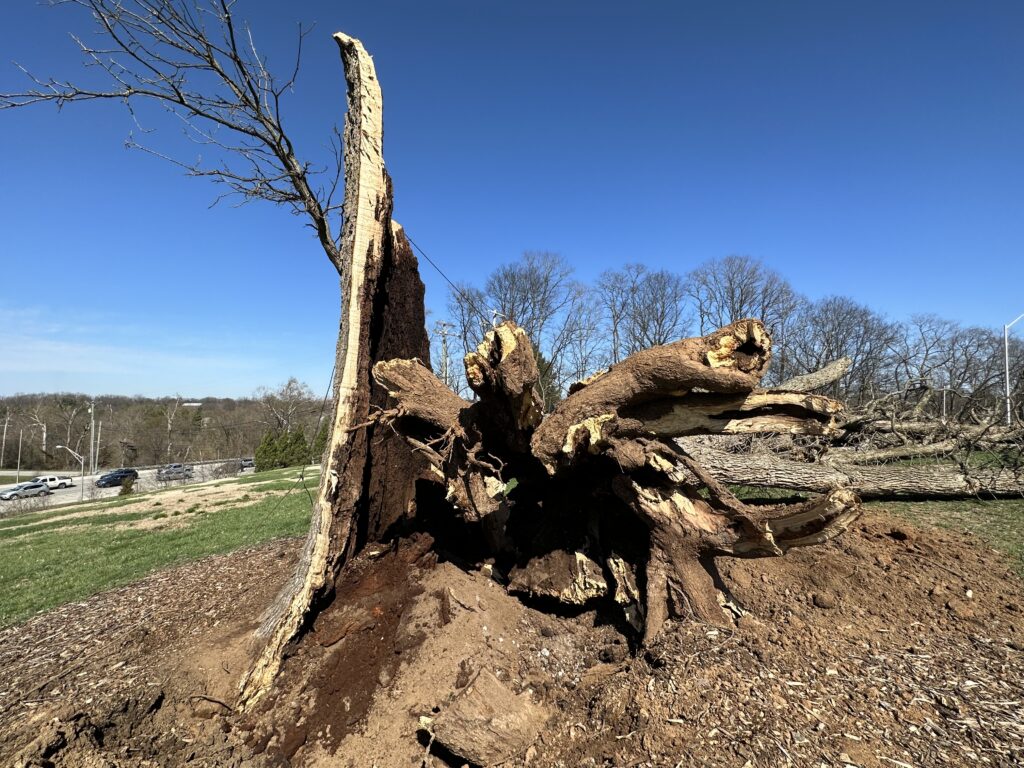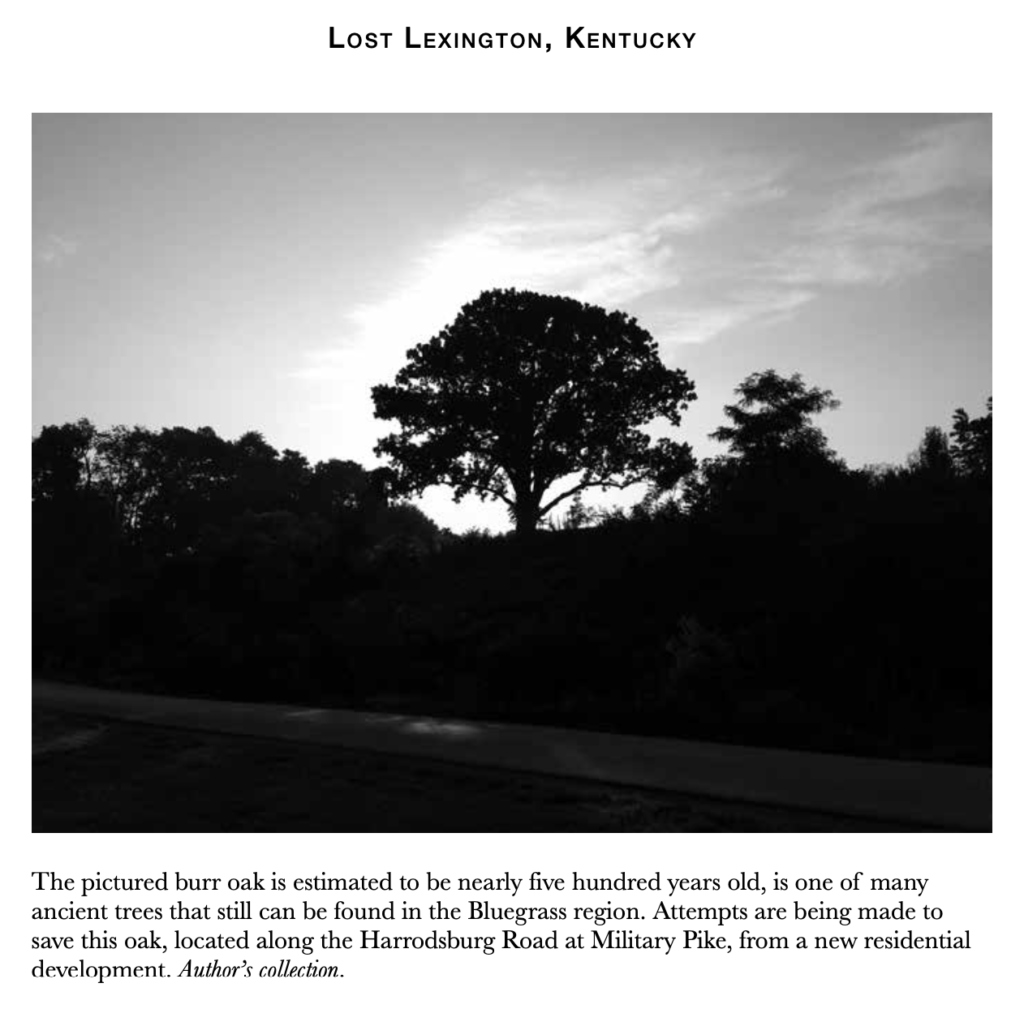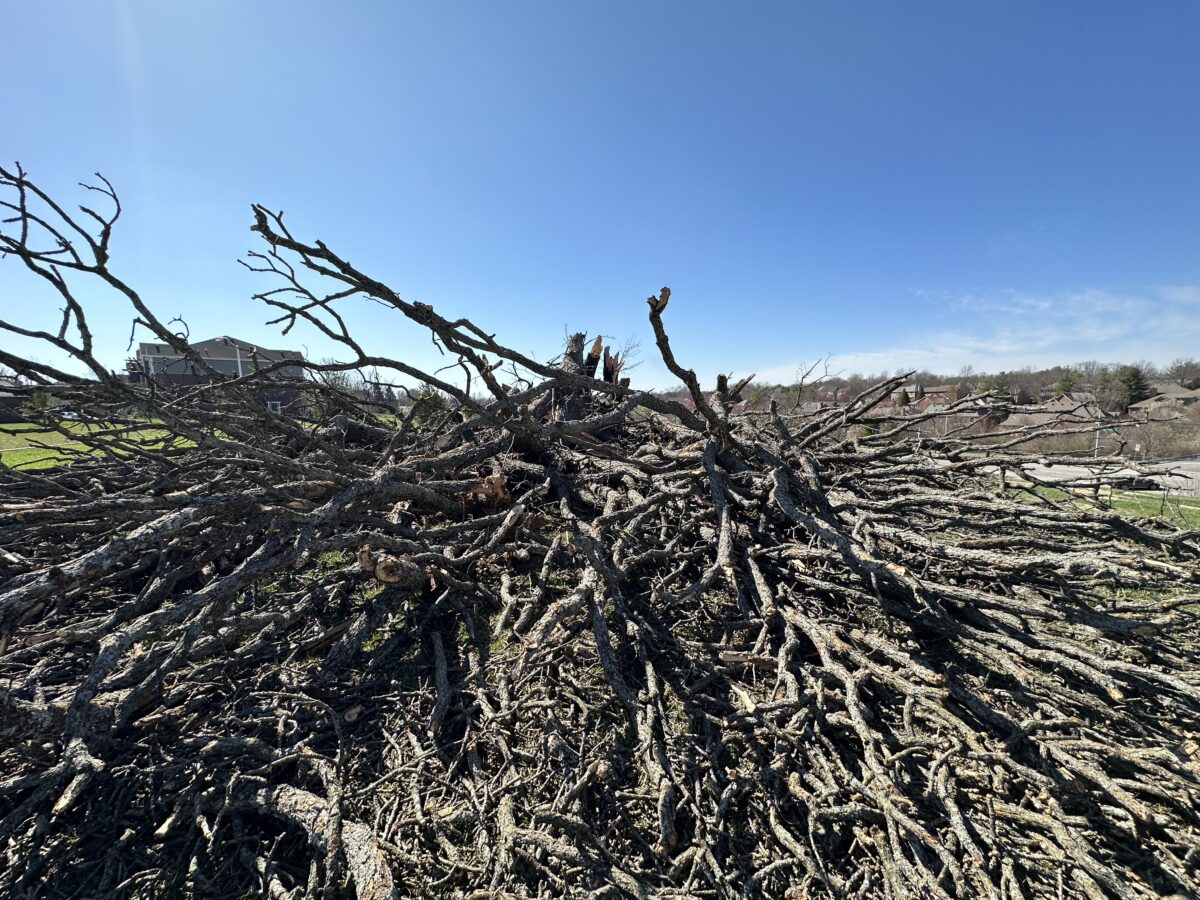The record-breaking winds of March 3, 2023, caused much destruction throughout central Kentucky; these winds took down a sentinel landmark: the venerable Old Schoolhouse Oak. When I learned of the falling of this tree, I must admit I was greatly saddened because I so frequently admired her.
Possibly five-hundred years old, the Old Schoolhouse Oak began as a mere acorn from which a small seedling grew along a buffalo trace. The Old Schoolhouse Oak began when bison roamed this region centuries before Europeans began to settle here. Native Americans found sustenance along the trace near the Old Schoolhouse Oak which grew on a hill rising above the waters of the South Elkhorn Creek.
Under her boughs, the children of the South Elkhorn schoolhouse played and laughed and made memories. Under her boughs, they undoubtedly grieved the death of one of their own.
Too, the Old Schoolhouse Oak was a contemporary of not just you and I, but also of Christopher Columbus and Martin Luther (some suggest that our particular tree was not quite so old, in which case her named European contemporaries would be different, but there is no doubt that her growth long preceded the United States as a nation).
The Spirit of Trees
And it was Martin Luther who wrote that “God writes the Gospel not in the Bible alone, but also on trees, and in the flowers and clouds and stars.” And in her book Braiding Sweetgrass, Robin Wall Kimmerer, author and member of the Citizen Potawatomi Nation, reminds us of the power of trees to communicate in a language all their own:
In the old times, our elders say, the trees talked to each other. They’d stand in their own council and craft a plan. But scientists decided long ago that plants were deaf and mute, locked in isolation without communication. The possibility of conversation was summarily dismissed. Science pretends to be purely rational, completely neutral, a system of knowledge-making in which the observation is independent of the observer. And yet the conclusion was drawn that plants cannot communicate because they lack the mechanisms that animals use to speak…. But pollen has been carried reliably on the wind for eons, communicated by males to receptive females to make… nuts. If the wind can be trusted with that fecund responsibility, why not with messages?… There is so much we cannot yet understand with our limited human capacity. Tree conversations are still far above our heads.
Robin Wall Kimmerer

A Preservation Icon
A decade ago, the Old Schoolhouse Oak was nearly lost to development along the busy Harrodsburg Road corridor. Instead, however, the developers hired arborists to come up with a plan to save the venerable tree. Among those individuals was Dr. Tom Kimmerer who wrote about the Old Schoolhouse Oak in his book, Venerable Trees: History, Biology, and Conservation in the Bluegrass. I met Tom for the first time during the Kentucky Book Fair (back when it was in Frankfort) as his book and my first book, Lost Lexington, were both published around the same time. I also previously reviewed his book, Venerable Trees, on this blog.
In that review, I wrote that “although the preservation of historic buildings has been at times fiercely discussed over the past half-century in Lexington, … the fight over the preservation of historic trees has not drawn the same level of attention. But the preservation of the Old Schoolhouse Oak may be a game changer.”
Before Tom’s involvement, the mighty Old Schoolhouse Oak was not as prominent. Underbrush concealed a bit of its grandeur and the other trees in its council stood nearby. Below is an image and caption from a chapter in Lost Lexington that examined what has been lost in Lexington in terms of greenspace – calling for the preservation of what makes the inner Bluegrass region so unique.

But, ultimately the Old Schoolhouse Oak has been lost to history. It, too, is a part of lost Lexington. Tom Kimmerer’s prophetic words in Venerable Trees have come true
The best we can do is take the greatest care possible … and allow the tree to live out its natural life. We cannot stop such forces of nature as storms, and this is a very exposed tree.
Tom Kimmerer
No, we cannot stop forces of nature.

